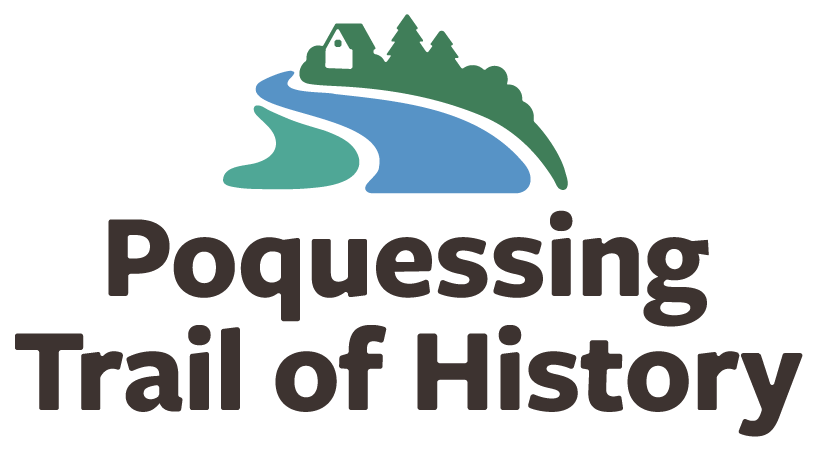

Highlighting the rich history of the Byberry neighborhood of Northeast Philadelphia by activating four historic sites along or near the Poquessing Creek Trail through public programs and historic restoration and interpretation.
BYBERRY: RICH IN HISTORY & DIVERSITY
By Jack McCarthy, Project Director
Byberry afforded the first retreat to my ancestors who fled from religious tyranny with William Penn to Pennsylvania. It was moreover the place where I drew my first breath. It has been and I hope will always be dear to me on that account.
Founding Father Benjamin Rush, 1792 letter to Byberry resident James Thorton
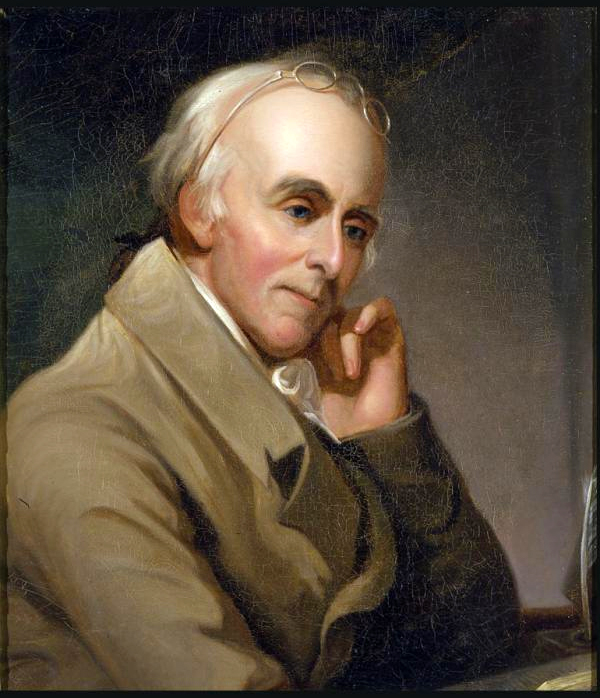
Painting of Benjamin Rush by Charles Willson Peale, after Thomas Sully, 1818. Independence National Historical Park
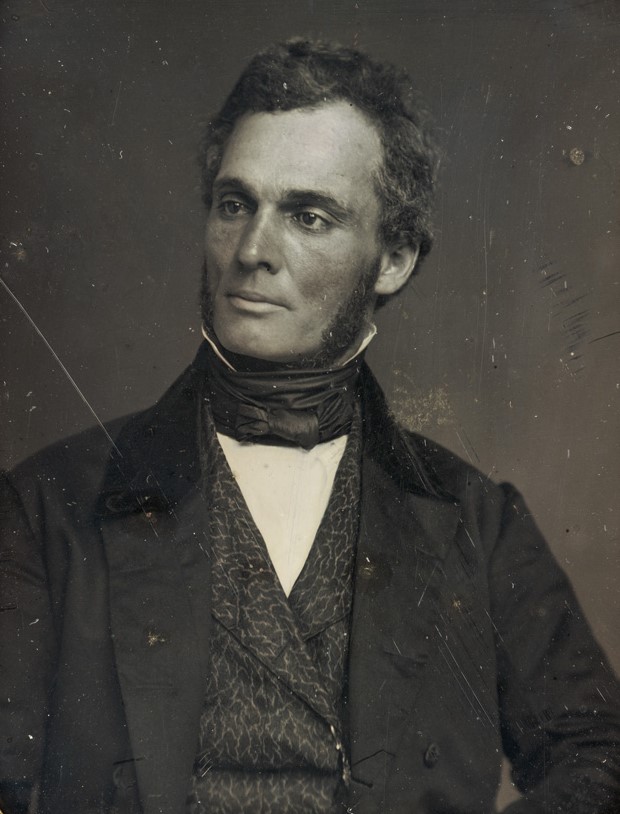
This is the red man’s country by natural right, and the black man’s by virtue of his suffering and toil. . . I elect to stay on the soil of which I was born and on the plot of ground which I have fairly bought and honestly paid for.
Robert Purvis, 19th-Century Black Abolitionist, Byberry resident & landowner
Robert Purvis Photograph, c. 1840-1849, Boston Public Library
Now part of Far Northeast Philadelphia, Byberry was originally inhabited by the Lenape, the indigenous people who lived in the greater Philadelphia area for thousands of years before Europeans arrived. The Lenape established villages and farmed, hunted, and fished along the creek they called Poquessing, which means in “place of mice” in the Lenape Unami language.
European settlement of the Poquessing area began with Swedes in the 1630s, followed by the Dutch and English. English settlement intensified after William Penn, an English nobleman and prominent member of the Religious Society of Friends (Quakers), was granted of large tract of land in America by the King of England in 1681.
Penn envisioned his new Province of Pennsylvania as a place where all people, especially his Quaker brethren, could live in peace and practice their religion freely. When he arrived in his new colony in fall 1682, Penn created the three original Pennsylvania counties: Philadelphia, Bucks, and Chester. The Poquessing Creek became the boundary between Philadelphia and Bucks counties, emptying into the Delaware River at the far northeastern point of Philadelphia.
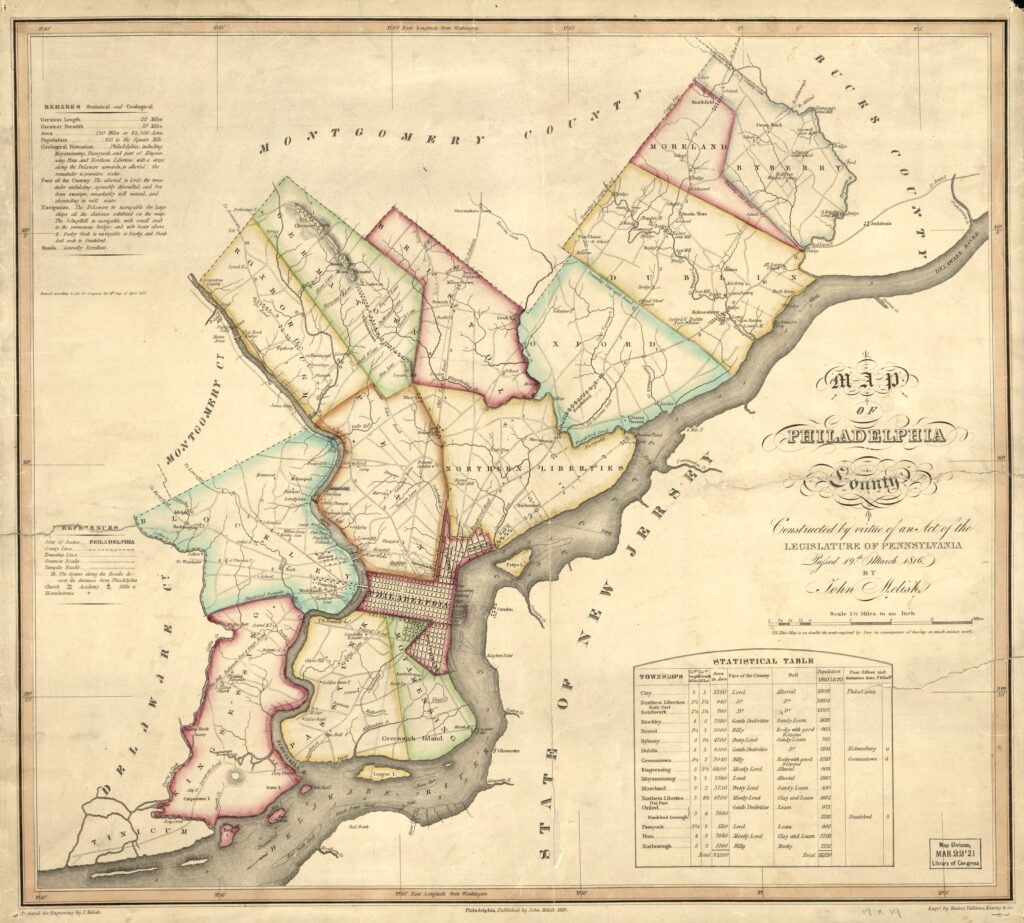
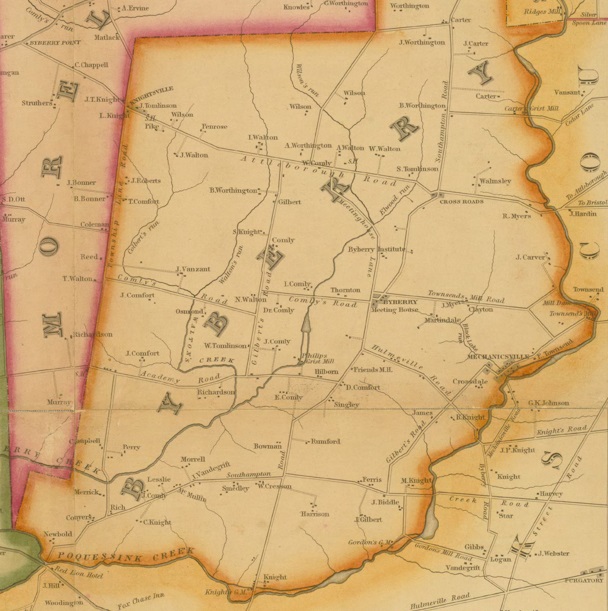
European settlement in the Poquessing area was sparse until English Quakers, some of whom had arrived with William Penn, began settling along and near the creek in significant numbers in the early 1680s. They named their new home after the village of Bibury in England, from which some of them had emigrated.
Among the early settlers was John Rush, Benjamin Rush’s great-great grandfather, who arrived with his extended family in 1683. The following year, William Penn granted John Rush 250 acres in Byberry and sometime around 1690 the family built the stone house in which Benjamin would be born fifty-some years later. The Rushes were among the early members of Byberry Meeting, the Quaker congregation that was established in 1683 and became an important institution in the area. (The Rush family left the Quaker faith in the 1690s; most eventually became Baptists.)
Byberry Quakers met for worship in members’ homes in the early years, then in 1694 a member provided a tract of land for a cemetery and a meeting house. The Village of Byberry grew up around the new Meeting property, at the current-day intersection of Byberry and Thorton Roads, where the Meeting remains active to this day. Byberry was incorporated as a township within Philadelphia County in 1794 and absorbed into the City of Philadelphia in the 1854 city-county consolidation.
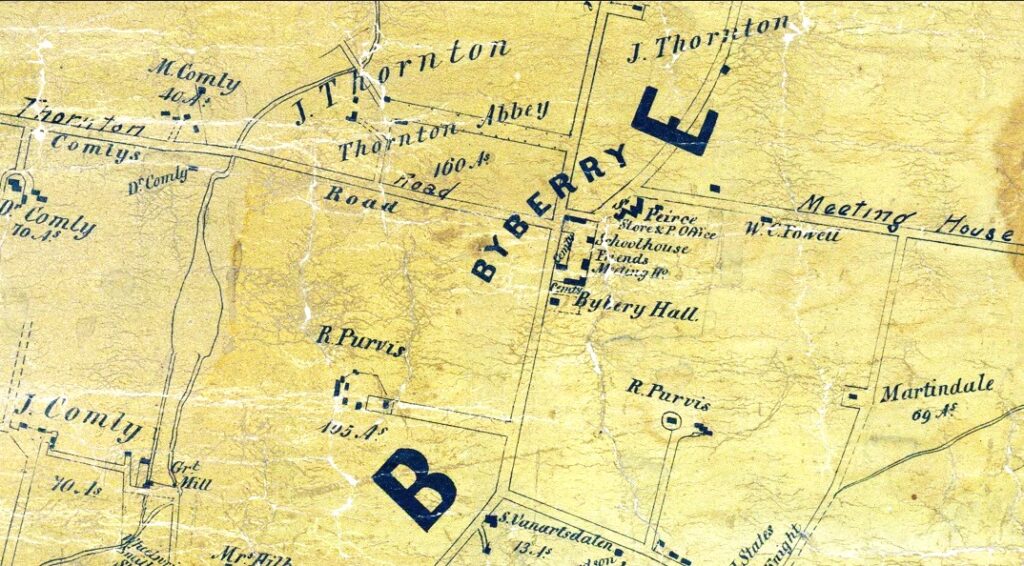
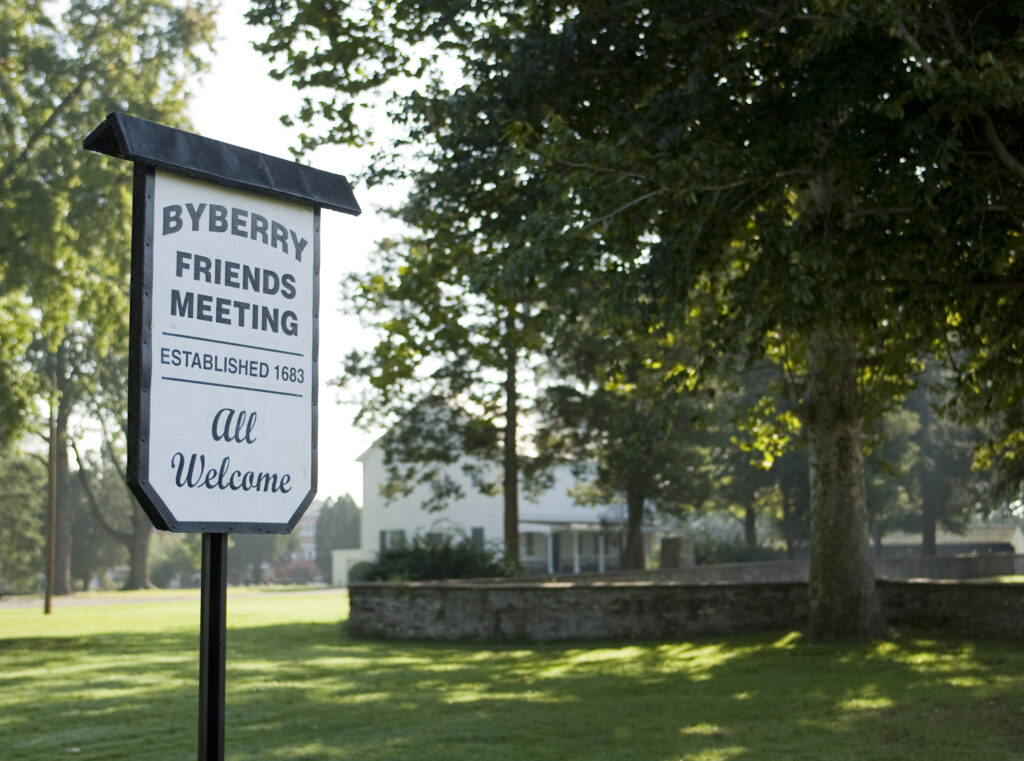
The Lenape were largely gone from the Byberry area by the early eighteenth century, having been displaced by the growing European population. William Penn treated the Lenape fairly (unlike his sons) and was a trusted friend to them, but his development of the Colony of Pennsylvania forced them from their longtime homelands in the Philadelphia area. Penn was also a slave owner and allowed slavery to flourish in his province. Many Quakers were vehemently opposed to slavery, but others accepted the practice and were enslavers themselves, including several who lived in Byberry.
A 1767 Byberry Township tax record lists seventy-nine head-of-household taxpayers, of whom eight were slave owners, five of them Quakers. The eight slave holders owned a total of eleven enslaved Blacks. Most Quakers had begun freeing the Blacks they held by this time, however, and in 1780 Pennsylvania passed a law providing for the gradual abolition of slavery. That same year, Byberry Friends Meeting established a small burial ground not far from the Meeting as a final resting place for area free Blacks and people of color.
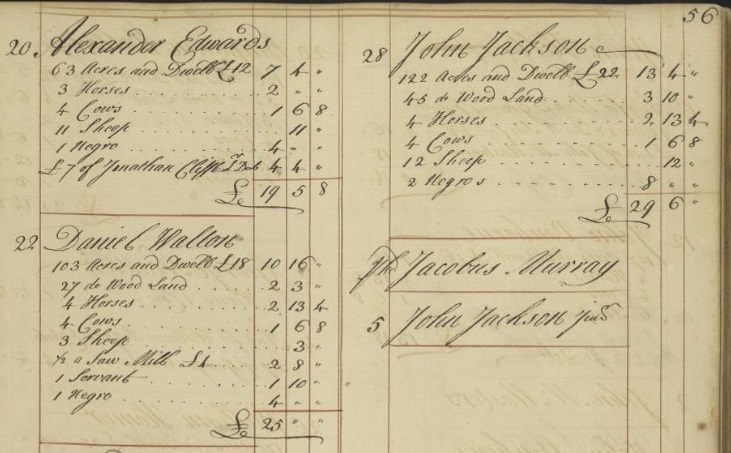
Robert Purvis, a Black man who was a nationally known figure in the abolishment movement and Underground Railroad, would play a prominent role in Byberry in the mid-nineteenth century. Purvis was born in 1810 in Charleston, South Carolina to a white Scottish father who was a successful merchant and a mother who was partly of African descent and a free woman of color.
In 1819 the Purvis family moved to Philadelphia, where Robert would become a leading member of the city’s Black community. He was fair skinned and could have easily passed for white, but he chose to identify with his African heritage and work tirelessly for his people. Wealthy, educated, and charismatic, he supported many of the Black community’s causes, including the Underground Railroad.
Purvis’ activities put his life in danger in the racially charged city and in 1844 he moved with his family to rural Byberry, purchasing a large tract of land near Byberry Friends Meeting. The Purvis home became an important stop on the Underground Railroad while Robert continued his public anti-slavery and social activism. In 1847, he and two local residents built Byberry Hall, which became a widely known venue for discussions of abolition and other social issues of the time.
Through the nineteenth century and first half of the twentieth, Byberry remained a sparsely populated rural area. It began to experience explosive growth in the post-World War II era, when large parts of Northeast Philadelphia saw a major building boom. Today, Byberry is mostly residential but also includes several light industrial parks and two major public nature parks that are connected to each other: Benjamin Rush State Park and Poquessing Creek Park, the latter administered by the Philadelphia Parks and Recreation department.
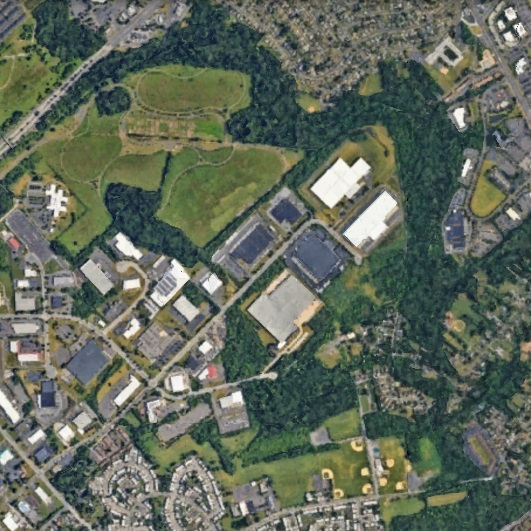
For many Philadelphians, the name “Byberry” brings to mind the infamous Philadelphia State Hospital at Byberry, the large state-run psychiatric facility that from 1911 to 1990 housed thousands of patients, often under inhumane conditions. The hospital’s expansive campus along Roosevelt Boulevard was a well-known, if negative, landmark in the area.
After the hospital closed in 1990, all but a few of the buildings were demolished and most of the property was converted to a mix of residential and industrial uses. However, the eastern part of the hospital grounds became Benjamin Rush State Park, which was established in 1975 and underwent a major upgrade in 2013.
Today, some aspects of Byberry’s early history survive, but much has been lost. Byberry Hall is still standing, part of the five-acre oasis of green space and historic buildings that Byberry Friends Meeting has occupied since 1694. The Meeting’s burial ground for free Blacks and people of color, now known as the Byberry Township African American Burial Ground, is about a mile away, on the edge of Benjamin Rush State Park. Largely abandoned and overgrown for years, the Burial Ground will soon be officially incorporated it into the state park and efforts are underway to restore and honor it as part of the Poquessing Trail of History project.
There is little trace of the Lenape in Byberry today, but their heritage lives on in the names they gave to area creeks, including the Poquessing, and in the strategically placed paths they created that are now major roads in the region. One of the objectives of the Poquessing Trail of History project is to build a memorial to the Lenape and honor their history in the area.
The Benjamin Rush birthplace house is a tragic story. In the 1960s, city and state funds were allocated and planning was underway to acquire and restore the building and turn it into a historic site. Suddenly, and without warning, the city demolished it in early 1969. Local citizens and preservationists were outraged and saved stones and other materials from the house with plans to rebuild it a few miles away on the grounds of Byberry State Hospital. Those plans never came to fruition, but some of the building materials survive. Using them to create a representation of the house in Benjamin Rush State Park is a key objective of the Poquessing Trail of History project.
The project will activate each of these four sites—a Lenape memorial, the Benjamin Rush birthplace house, the Byberry Township African American Burial Ground, and Byberry Hall—recreating and/or rehabilitating them and sharing their compelling stories to highlight the rich, diverse history of Byberry for the local community and beyond.
